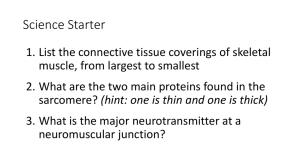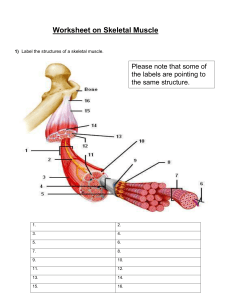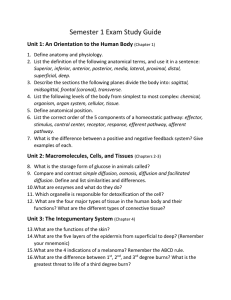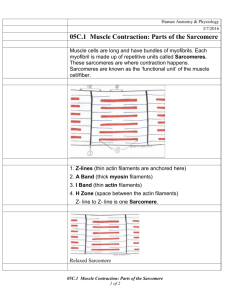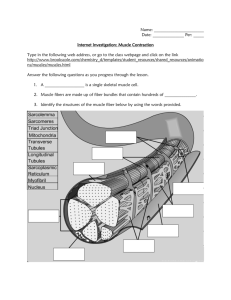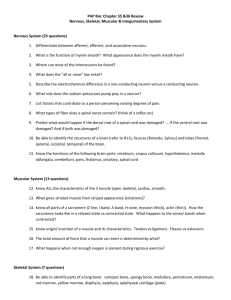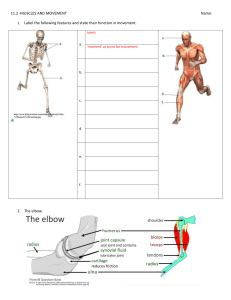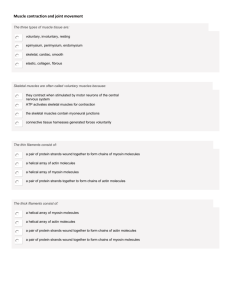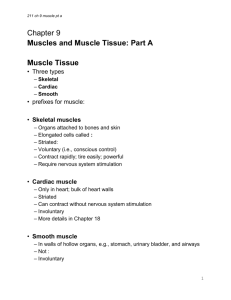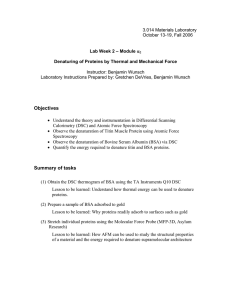Bios1030 Thursday week 8 Muscle review: 1.Describe what is
advertisement
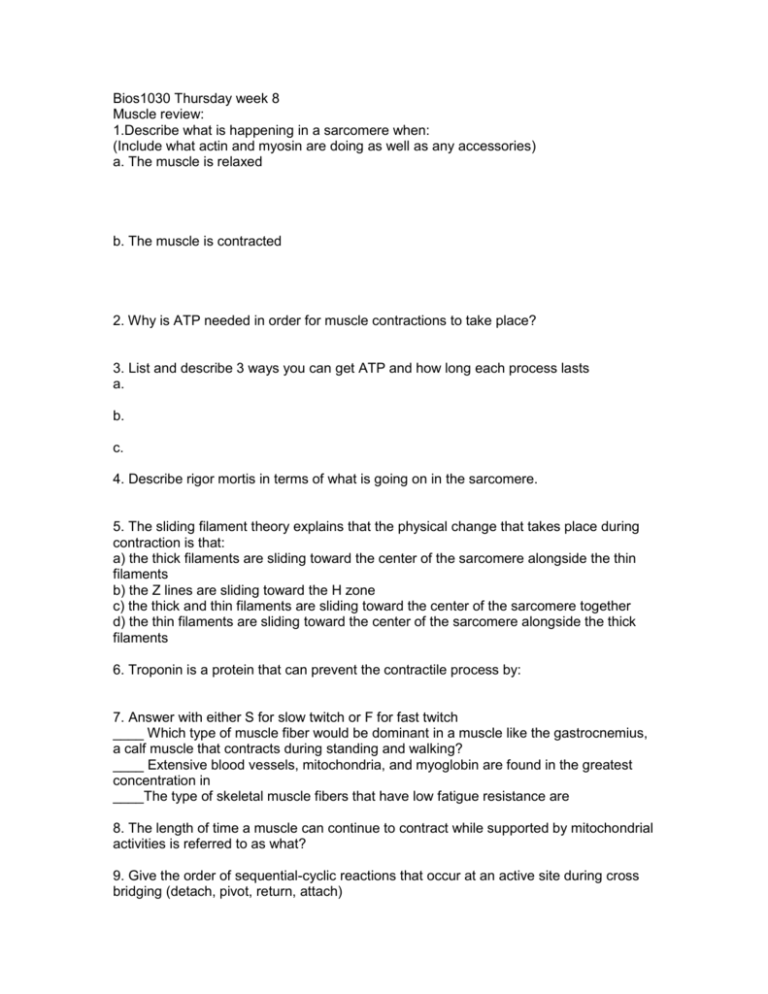
Bios1030 Thursday week 8 Muscle review: 1.Describe what is happening in a sarcomere when: (Include what actin and myosin are doing as well as any accessories) a. The muscle is relaxed b. The muscle is contracted 2. Why is ATP needed in order for muscle contractions to take place? 3. List and describe 3 ways you can get ATP and how long each process lasts a. b. c. 4. Describe rigor mortis in terms of what is going on in the sarcomere. 5. The sliding filament theory explains that the physical change that takes place during contraction is that: a) the thick filaments are sliding toward the center of the sarcomere alongside the thin filaments b) the Z lines are sliding toward the H zone c) the thick and thin filaments are sliding toward the center of the sarcomere together d) the thin filaments are sliding toward the center of the sarcomere alongside the thick filaments 6. Troponin is a protein that can prevent the contractile process by: 7. Answer with either S for slow twitch or F for fast twitch ____ Which type of muscle fiber would be dominant in a muscle like the gastrocnemius, a calf muscle that contracts during standing and walking? ____ Extensive blood vessels, mitochondria, and myoglobin are found in the greatest concentration in ____The type of skeletal muscle fibers that have low fatigue resistance are 8. The length of time a muscle can continue to contract while supported by mitochondrial activities is referred to as what? 9. Give the order of sequential-cyclic reactions that occur at an active site during cross bridging (detach, pivot, return, attach) Bios1030 Thursday week 8 10/17 Test review: 1. Name the four tissue types with descriptions of each: a. b. c. d. 2. What is an axon? 3. What is a dendrite? 4. What is the myelin sheath? 5. What are the two main layers of the skin? Give characteristics of each: 6. What does “touch DNA” refer to? 7. How many bones in the adult human body? How many are you born with? 8. Name 5 bones of interest in the lab. 9. Where is blood formed and from what? 10. What is the difference between osteocytes, osteoblasts and osteoclasts? 11. Why is bone remodeling important? 12. What are the four stages of bone repair and what is happening at each stage? 13. What is osteoporosis? What is the peak age for bone density?
